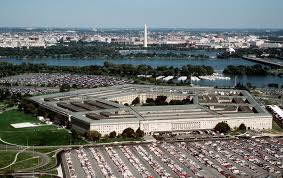Pentagon says military ops against IS in Iraq, Syria cost US $1.1 bn
 WASHINGTON: Ever since the US started conducting military operations against the Islamic State in Iraq and Syria since mid of June, Pentagon has spent a whopping amount of $1.1 billion, revealed the US Central Command
WASHINGTON: Ever since the US started conducting military operations against the Islamic State in Iraq and Syria since mid of June, Pentagon has spent a whopping amount of $1.1 billion, revealed the US Central Command
The data of expenditure on anti-IS operations in Iraq and Syria has been released at a time when the extremists are said to be close to take the Syria-Turkey border town of Kobane, where despite the costly US strikes, the IS fighters have managed to wreak havoc. Thousands had to flee Kobane yesterday fearing the IS onslaught.The United States started launching air strikes in Iraq on August 7 and in Syria on September 22.
The US strikes were conducted as part of President Barack Obama’s comprehensive strategy to degrade and destroy ISIL. The destruction and degradation of ISIL targets in Syria and Iraq further limits the terrorist group’s ability to lead, control, project power and conduct operations, according to Department of Defense.
Almost 50 percent of the cost incurred was by US Navy air strikes and Tomahawk cruise missiles that were used to pound on ISIS targets in Syria.
According to the US Central Command, over $62 million alone was spent by US Navy while conducting strikes against the IS. The US Navy is reported to have dropped approximately 185 munitions while the Air Force have launched nearly 1000 munitions.
The bulk of the Navy costs were for the 47 Tomahawk cruise missiles fired by American warships in the Persian Gulf and the Red Sea that targeted the Khorasan Group, an al-Qaida cell, in eight locations west of the city of Aleppo in Syria.
The group was said to be plotting imminent attacks on American and Western interests, and it was one of the key targets two weeks ago when the US first began airstrikes into Syria.
The Pentagon has struggled to come up with specific cost figures for the Iraq and Syria operations. Officials say it has cost an average of $7 million to $10 million daily since June.The costs of the operations began at a much lower rate in June then escalated as airstrikes began in northern Iraq on August 8. In late August, the Pentagon said the cost was an average of $7.5 million daily.
The air strikes were expanded to Syria in September, prompting the latest, higher average estimates.There are currently more than 1,300 US troops in Iraq, including security personnel, staff at two joint operations centers in Baghdad and Irbil, and advisory teams that are working with Iraqi brigades and headquarters units.
A coalition of about 40 nations is participating in the U.S.-led operations, including several Arab nations that are conducting airstrikes in Syria. Several European nations are participating in the airstrikes in Iraq, but not in Syria.

